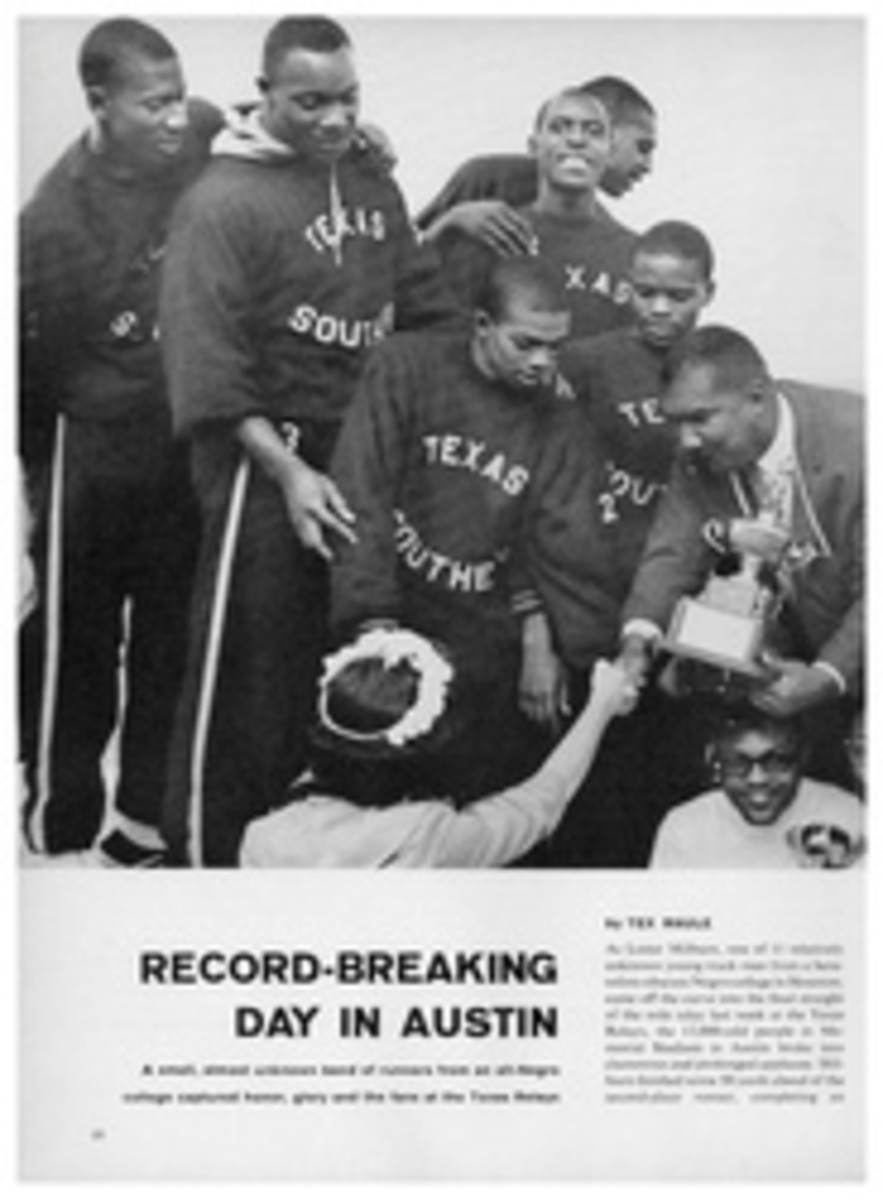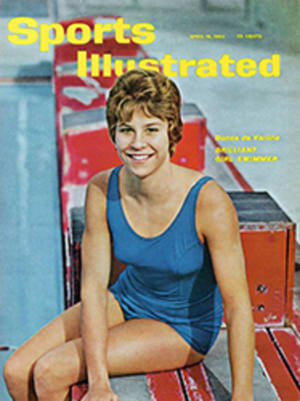
Hung up on a fine point of law
Whatever happens during the America's Cup competition this summer—and in thousands of sailing regattas across the country—one element is almost certain to be missing. This is the high drama of boat-for-boat tacking duels, wherein a slower vessel establishes a slim lead just before the starting gun and then, by nerve, skill and tactical superiority, holds that lead by covering every move its faster rivals make in their effort to break out ahead. Probably the most spectacular tacking duels ever held were those between Vim and Columbia during the cup trials in 1958. Bus Mosbacher at the helm of the 19-year-old Vim would maneuver her into the lead before a windward start and then follow every twist and turn the younger, faster Columbia made as she tried to get off the hook. If Columbia came up sharply, Vim responded to the luff; if she bore away, Mosbacher followed. On one single weather leg of the final trials, in her attempt to shake off Vim, Columbia made 36 tacks plus uncounted false tacks, luffs and feints.
"We tried to respond to everything Columbia did," says Mosbacher. "Covering like this is the essence of match racing; that's what makes it fun."
Just after the last cup races in 1958, however, the fun was over. At a meeting in London of the International Yacht Racing Union a seemingly innocent change was made in the wording of one rule, and this change has eliminated much of the premium on helmsmanship and crew finesse. The rule formerly read, "When sailing on a free leg of the course, a yacht shall not sail below her Normal Course when she is clearly within three of her overall lengths of a Leeward Yacht or of a yacht Clear Astern that is steering a course to pass to Leeward." The phrase "on a free leg of the course" was dropped, thus making the rule apply to every leg of a race.
Essentially, this means that a boat may no longer alter her course and bear off to prevent another boat from passing her to leeward (see diagram) when both are going to weather. Under the new wording, if a slower boat is on top at the start, the faster yacht has only to ease sheets and drive through the wind shadow, coming up again when her wind is clear, to head for the mark. "This rule doesn't favor the man who sails the better race; it favors mechanics," states Boat Builder Harry Melges Jr. of Lake Geneva, Wis., who has held the North American sailing championship since 1959. "If you take too many defensive moves from slower boats, you put all the emphasis on equipment—it makes brute speed pay off. Besides, it breeds dishonesty. I just had a header,' says the guy to windward, and how can you prove he didn't?" Lowell North, three times world champion in the Star class, considers the rule "unworkable—too hard to enforce, to even try to enforce."
Last year, as a member of Easterner's crew when she won the first scheduled-race victory of her career (SI, July 17, 1961), I had a deckhand's opportunity to see the weakness of this rule. Rounding the final leeward mark for a beat to the finish during a triangular race on Long Island Sound, Easterner was some 300 yards ahead of Weatherly. In the light breeze and smooth water Weatherly gained rapidly, coming abeam to leeward before the leg was half over. Then the breeze freshened, and Easterner lost her sluggish feel, picking up speed until the two boats were sailing evenly. But the gap of water laterally between the hulls kept narrowing as Weatherly pointed higher. "You're bearing off!" hailed Arthur Knapp from the wheel of Weatherly. I stared at Easterner's jib. It was not an efficient sail and certainly could not be taken closer to the wind. "You're still bearing off!" came another shout. Bus Mosbacher, who was sailing Easterner that day, looked at me and made a gesture of despair. "What the hell?" he asked. "What can you do?" I replied. "If you point any higher you'll stop dead."
If testifying before a protest committee I would have said both skippers were right: both sailing a "normal course," or, as it has since been renamed, a' 'proper course," i.e., the course a yacht might sail in the absence of another yacht to finish as quickly as possible. Yet the new rule gave the helmsman to leeward the option of setting the course for both. As Mosbacher says, "This rule is in the gray area where there are arguments and hard feelings. Minor differences in rigging and sails make it impossible to point identically. Besides, no two men take a boat to windward exactly the same."
Good intentions
At the time the rule was changed, in the interest of furthering international uniformity, America's representative, Robert Bavier Jr., went along with the majority. But now that he has had a chance to judge the effects of the change Bavier is opposed to it. In his opinion, it is "impossible to enforce. Also, why shouldn't a skipper who has established a lead to windward be allowed to take steps to stay there?"
But the wheels of world organizations turn slowly. Although the rule was discussed and criticized at a conference in London last fall, there can be no change under international agreement until the next meeting of the IYRU in the fall of 1964. This seems a long time for racing skippers to wait for a pump when the boat is leaking.
ILLUSTRATION
TO DEFEND LEAD prior to the change in the rules a slow boat (No. I, above) could bear off her proper course to block the wind of a faster rival (No. 2) passing on her lee side.
WIND
PROPER COURSE
1
1
2
2

